How to Write Email
How to Write a Winning Proposal Email
A compelling guide to crafting persuasive proposal emails that will leave a lasting impression and yield positive results.
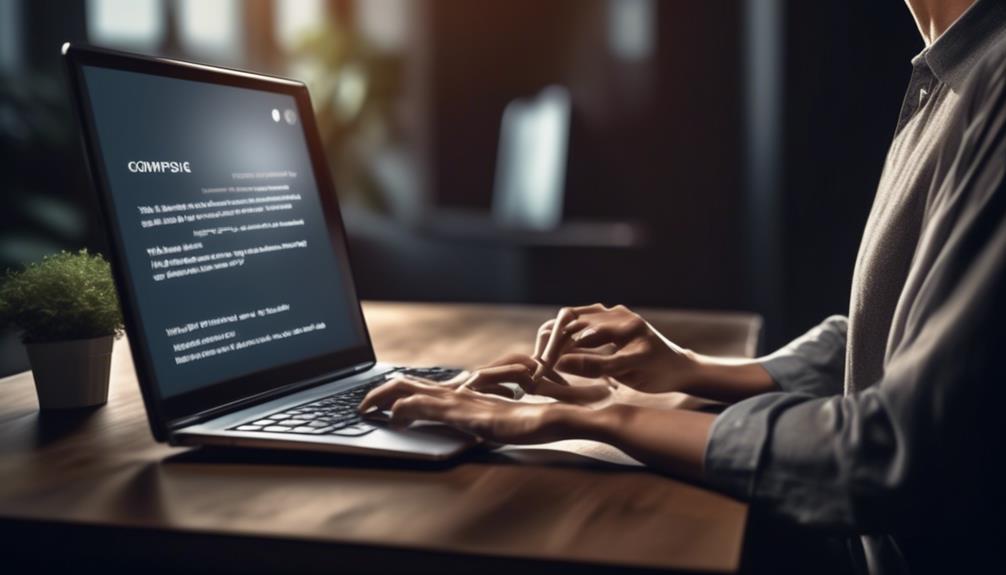
Are you finding it challenging to efficiently convey your suggestions through email?
As professionals, we understand the importance of crafting a compelling proposal email that not only captures the recipient's attention but also persuades them to take the desired action.
But what are the key elements that make a proposal email stand out and leave a lasting impression?
Join us as we explore the essential components and best practices for crafting persuasive and impactful proposal emails that yield positive results.
Key Takeaways
- Proposal emails are crucial sales documents that persuade potential clients.
- There are two types of proposal emails: solicited and unsolicited, each with its own purpose.
- Tailoring the proposal email to the recipient's needs and interests is essential for success.
- Attention-grabbing subject lines, clear objectives, and compelling calls to action are important elements in writing a proposal email.
Understanding Proposal Emails
Understanding proposal emails is crucial for effectively communicating business proposals and engaging potential clients. When we write a proposal email, we're essentially crafting a sales document that has the potential to sway potential clients in our favor.
Whether the business proposal is solicited or unsolicited, the proposal email format remains constant, consisting of key components such as the subject line, greeting, body, ending, and signature. These emails serve as a platform to present our offerings, including supporting evidence, timelines, terms, conditions, and costs.
It's important to remember that proposal emails play a pivotal role in the sales funnel, providing vital information for leads to make informed decisions. To write a proposal email that resonates with potential clients, we must ensure that it has a clear objective, a detailed proposal, and mutual acknowledgment.
Types of Proposal Emails
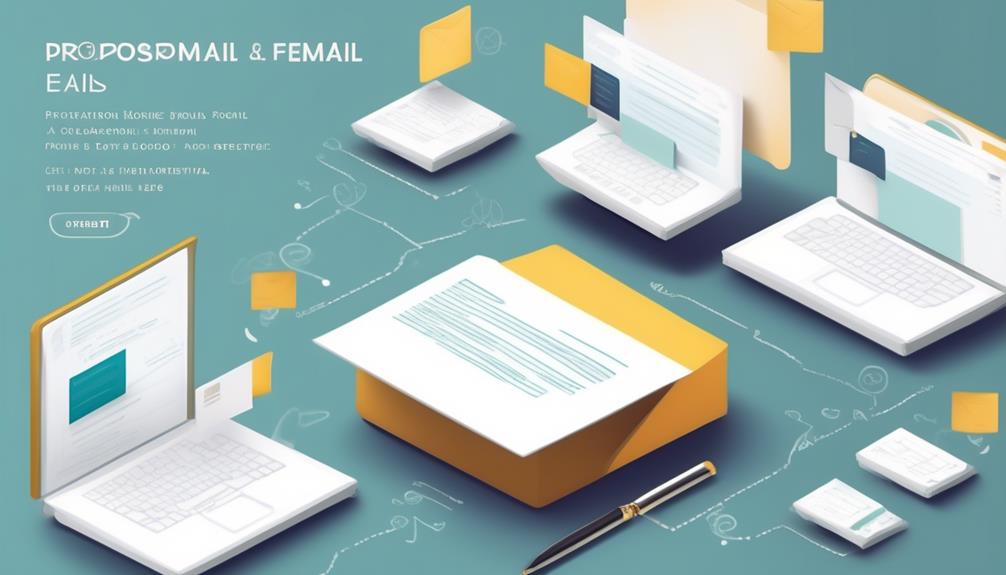
Let's talk about the different types of proposal emails and their specific purposes.
Understanding the purpose of proposal emails, the essential elements of a proposal, and the writing style tips can help us tailor our approach for each type of email.
Purpose of Proposal Emails
Two primary types of proposal emails serve distinct purposes in the sales process, contributing to the overall effectiveness of communication with potential clients or customers. Here is a table summarizing the purposes of different types of proposal emails:
| Type of Proposal Email | Purpose |
|---|---|
| Solicited | Responding to a specific request for information or a proposal from a potential client. |
| Unsolicited | Proactively reaching out to potential clients with a proposal or information about products or services. |
Understanding the purpose of each type of proposal email is crucial for crafting effective communication with potential clients. Whether responding to a specific request or initiating contact, tailoring the email to the recipient's needs is essential for success in the business proposal process.
Elements of a Proposal
When crafting a proposal email, it's essential to understand the distinct purposes and key elements of both solicited and unsolicited types to effectively engage potential clients.
A solicited proposal email is initiated by a request from the client, often in response to a specific project or business proposal. It typically includes an objective statement, a detailed description of the proposed project, and terms and conditions.
On the other hand, an unsolicited proposal email is sent without prior request, aiming to capture the client's attention and generate interest. It should include elements such as a statement of gratitude, problem definition, proposed solution, and costs.
Understanding these elements and tailoring the proposal email to the specific needs and interests of potential clients is crucial for achieving success in the competitive business environment.
Writing Style Tips
Crafting compelling proposal emails is a critical aspect of engaging potential clients and moving them through the sales funnel. When it comes to writing style, it's essential to consider various elements to ensure the effectiveness of the email. The table below outlines key writing style tips for creating impactful proposal emails.
| Writing Style Tips | Description |
|---|---|
| Email Templates | Utilize pre-designed templates for consistency. |
| Subject Lines | Craft attention-grabbing subject lines. |
| Social Proof | Include testimonials or case studies for credibility. |
| Effective Proposal | Clearly outline the proposed solution and its benefits. |
Incorporating these elements into the email, along with a compelling call to action and a strong email ending, can significantly enhance the impact of the proposal.
Business Proposal Email Format

In establishing a compelling business proposal email format, it's essential to craft a structure that effectively conveys the requisite information and entices the reader to take the desired action.
The format for sending a business proposal email is critical for making a strong impression. The subject line serves as the initial hook, so it should be clear, concise, and captivating.
The greeting sets the tone for the email and should be personalized for a more engaging approach.
The opening line and body should be well-structured, presenting the proposal in a coherent and organized manner. It's crucial to include supporting evidence, timelines, key terms, conditions, and costs to provide a comprehensive overview.
As the email draws to a close, the ending should feature a clear call-to-action, prompting the reader to take the next step. A professional signature with contact information adds a final touch of credibility.
Subject Lines
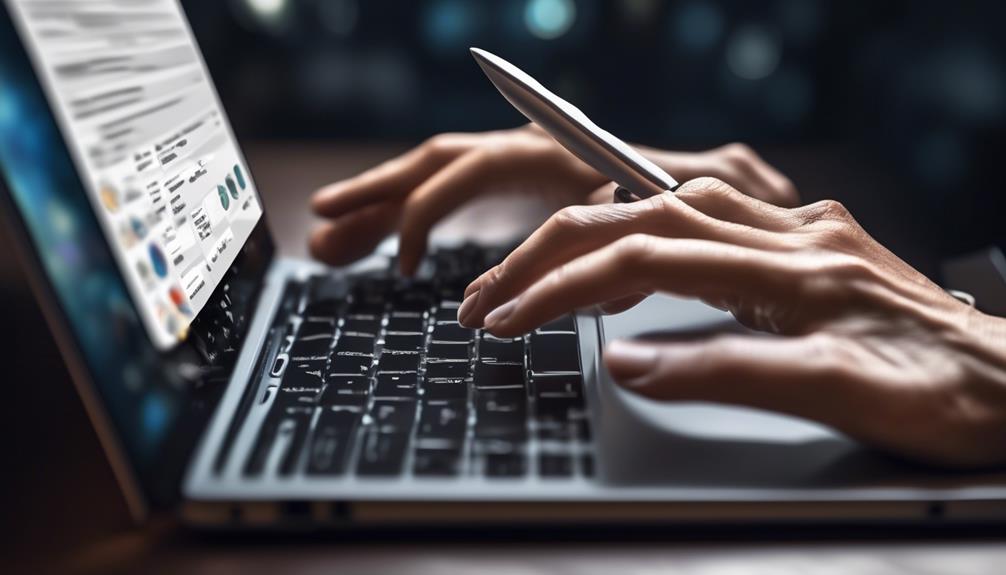
Creating impactful subject lines is essential for capturing the recipient's attention and prompting them to engage with the proposal email. When crafting a business proposal email subject, it's crucial to be clear and concise about the content of the email.
For formal emails, the subject line should provide a straightforward summary of the proposal, while for informal emails, it should aim to spark curiosity and interest.
When reaching out to potential clients, using subject lines that address their specific needs or offer solutions to their problems can significantly increase open rates. Additionally, personalizing the subject line with the recipient's name can create a more impactful impression.
It's important to steer clear of generic or vague subject lines that may not entice the recipient to open the email. A well-crafted subject line can make the difference between your proposal email being opened or ignored.
Here's an email sample of an effective business proposal subject line:
'Solving [Client's Company Name]'s [Specific Challenge] – Customized Solution Proposal.'
Ensuring an attention-grabbing subject line for unsolicited proposals is essential in making a lasting impression and initiating engagement.
Opening Lines and Body
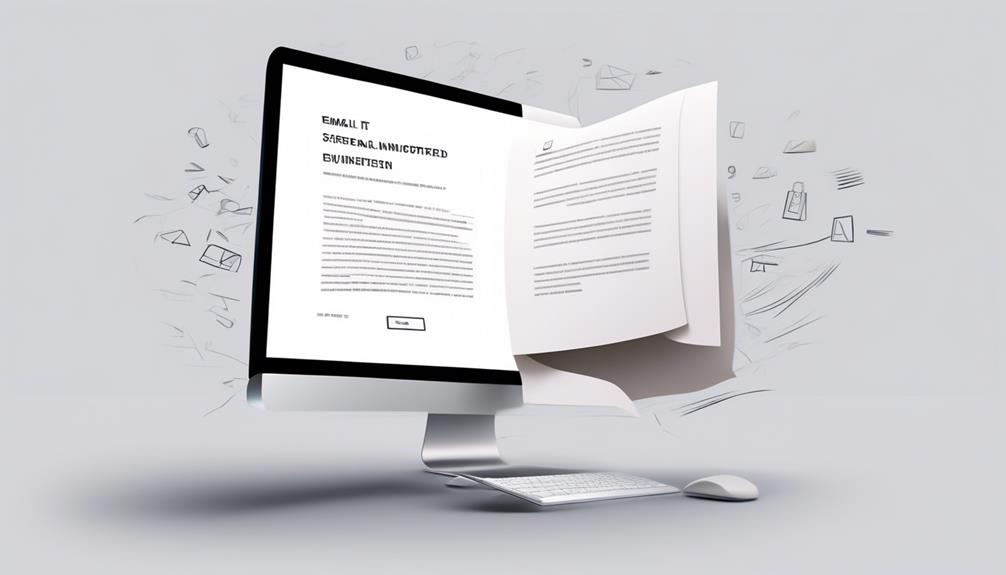
Starting our email with a personalized greeting sets a professional tone and establishes a connection with the recipient from the outset.
When writing the body of a proposal email, it's crucial to capture the recipient's attention and clearly convey the value of your proposal. Here's how to effectively structure the opening lines and body of your proposal email:
- Clear Objective Statement: Begin with a concise and compelling statement that clearly outlines the purpose of the email and what you're proposing.
- Address the Needs of Your Potential Client: Demonstrate an understanding of the recipient's challenges or requirements, and explain how your proposal addresses those specific needs.
- Use Bullet Points: Organize the body of the email using bullet points or a numbered list to present the problem statement, proposed solution, and key benefits in a structured and easy-to-digest format.
Ending a Proposal Email

After effectively capturing the potential client's attention and clearly conveying the value of our business proposal in the body of the email, it's essential to end the proposal email with a concise summary and a clear call-to-action.
The conclusion should reiterate the main objective of the proposal and emphasize the benefits it offers. For instance, 'In summary, our proposal aims to increase your online sales by 30% through targeted digital marketing strategies. We're confident that this partnership will lead to significant growth for your business.'
Following this summary, it's crucial to include a strong call-to-action, prompting the potential client to take the next steps in the sales process. This could be as simple as, 'We would appreciate the opportunity to discuss this proposal further at your earliest convenience. Please feel free to reach out to us using the contact information below.'
Professional Email Signature
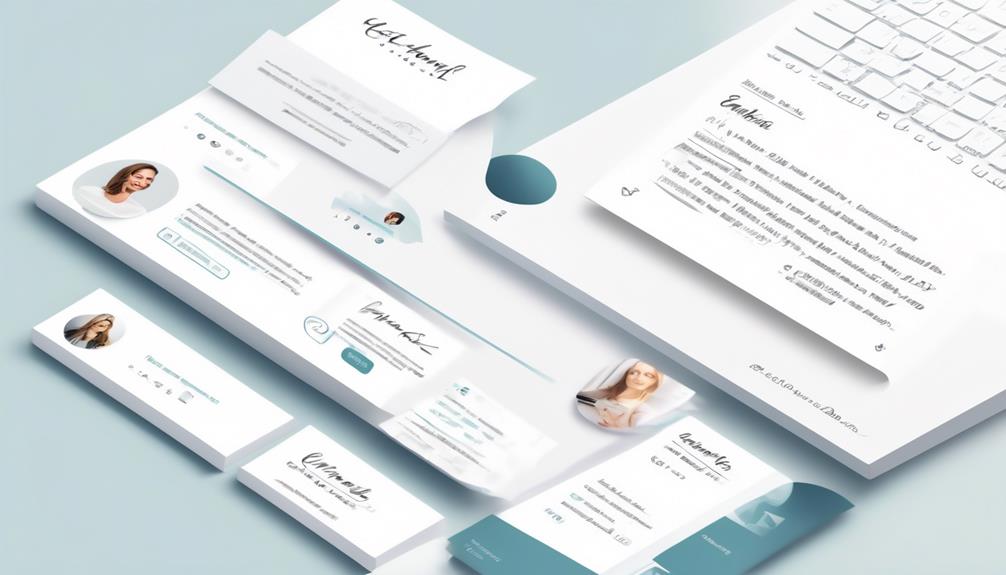
When crafting a professional email signature, it's crucial to consider the importance, design, and content.
An effective signature should convey your identity and contact information clearly and concisely, while also reflecting your company's brand.
Including relevant details and maintaining a professional appearance will enhance the overall impact of your email communications.
Email Signature Importance
Crafting a professional email signature is essential for establishing credibility and making a lasting impression on your recipients. The importance of an email signature can't be overstated, especially when writing a proposal email or engaging in business communication.
Here's why it matters:
- Professional Appearance: A well-crafted email signature lends a formal and polished look to your emails, reflecting the formality level required for a business proposal.
- Credibility and Trust: It helps in building trust and credibility with the email recipients, indicating that you're serious about working together.
- Personal Branding: An email signature serves as a form of personal branding, showcasing important contact information and company details, which is vital for a business proposal.
Crafting a professional email signature isn't just a formality; it's a crucial element in making a positive impact and enhancing your professional image.
Design and Content
Creating a professional email signature requires careful attention to design and content to ensure it accurately represents your brand and provides essential information to your recipients. When crafting your email signature for a business proposal email, consider including key details such as your name, job title, company details, contact information, and relevant links.
The design should be clean, simple, and consistent with your brand, while also being visually appealing. Visual elements like a logo or social media icons can enhance the overall look and feel.
It's important to keep the content concise and easy to read, ensuring that it aligns with the demographic information of your potential clients. Collaborating with your marketing team can also provide valuable insights into creating an effective and professional email signature.
Sample Business Proposal Email
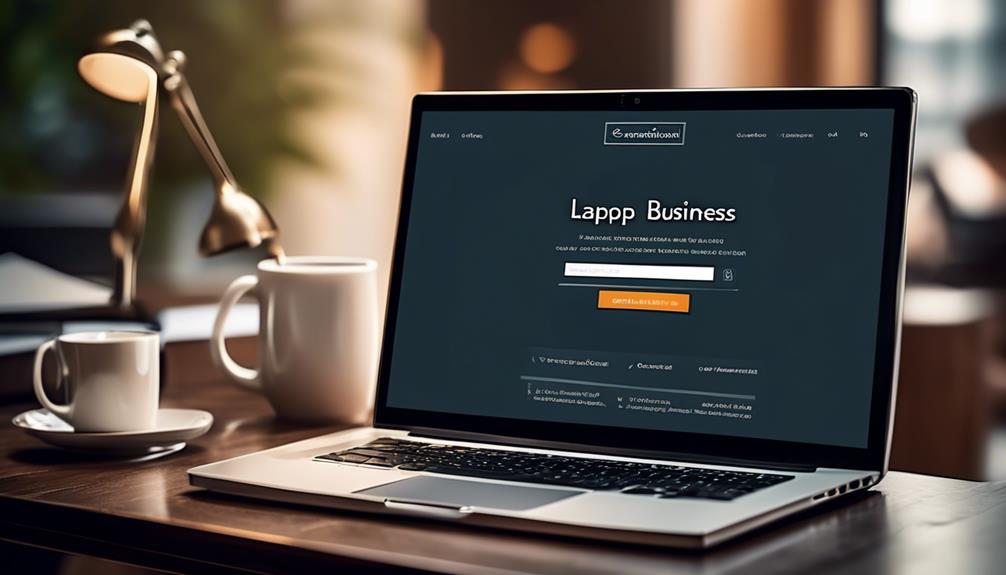
In crafting a compelling sample business proposal email, we aim to provide a clear and concise template that effectively captures the attention of potential clients.
When you write a business proposal email, it must make your objective clear and include basic information that the recipient would need to consider your proposal.
Here is an example of a proposal email format that you can use as a guide:
- Subject Line: Use a subject line that's specific and attention-grabbing, such as 'Proposal for [Client's Company Name]: [Your Company Name] Solutions'.
- Greeting and Opening Line: Personalize the email with a polite greeting, followed by a brief introduction of your company and the purpose of the email.
- Body and Ending: Clearly outline the problem, your proposed solution, pricing details, and the next steps. Additionally, including a link to your company website would provide the recipient with more information about your company and offerings.
When you send a proposal email, ensure that it's well-structured, personalized, and professional. By following this template, you can create a compelling business proposal email that increases your chances of success.
Proposal Submission Email Sample
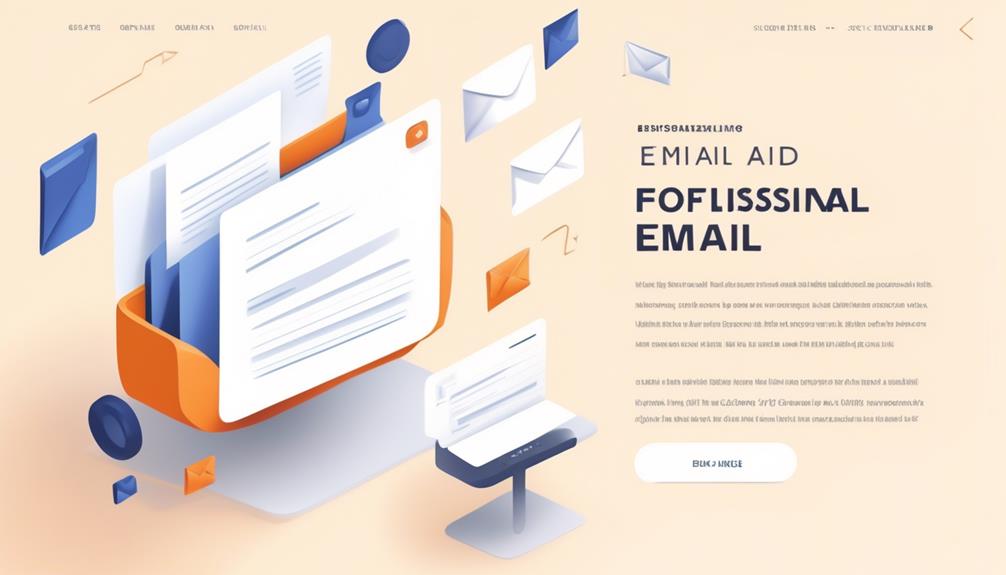
When crafting a proposal submission email, it's essential to consider the email structure, ensuring all key information is included and presented clearly.
We should also focus on creating a compelling call to action that motivates the recipient to take the next steps.
Personalizing the email and maintaining a professional tone will help in making a lasting impression on the recipient.
Email Structure
Upon submitting a proposal email, the structure should encompass a clear and engaging subject line, a warm and professional greeting, a compelling opening line and body, a concise ending, and a signature.
When writing a proposal email, it's important to follow best practices for structuring the email to ensure that the recipient is engaged and compelled to consider the proposal. Here are the key components of a well-structured proposal email:
- Subject Line: A good objective statement that clearly communicates the purpose of the email.
- Greeting: A warm and professional salutation to establish rapport with the recipient.
- Opening Line and Body: A compelling introduction that provides important information and captures the recipient's attention.
Following these structural guidelines will help ensure that your proposal email is effective and impactful for your email outreach.
Key Information
With the aim of crafting a compelling and persuasive proposal submission email, we must ensure that key information is effectively communicated to the recipient.
When sending a solicited business proposal to potential clients, the email's structure should include essential details such as an engaging introduction, a clear project proposal, and a tailored approach based on the buyer persona.
In the sales context, the business proposal email should highlight the unique value proposition and benefits offered, creating a sense of urgency and need. Including relevant statistics, case studies, or testimonials can further strengthen the proposal.
It's crucial to maintain a professional tone throughout the email, demonstrating expertise and trustworthiness.
Call to Action
In crafting a persuasive proposal submission email, it's imperative to conclude with a compelling call to action that motivates the recipient to take the next steps towards engaging with our proposal.
We need to guide potential clients on what to do next, and here's how we can achieve that:
- Clearly state the next steps: Write a clear and specific call to action, such as scheduling a meeting, requesting additional information, or signing a contract.
- Provide company details: Include essential contact information, such as company address, phone number, and email, to make it easy for clients to reach out.
- Offer assistance: Let potential clients know that we're available to help and answer any questions they may have about the proposal.
Email to Boss for Proposal

We are submitting a proposal to the boss for consideration.
When writing an email to the boss for a proposal, it's crucial to convey the business need clearly and concisely. The email should outline the purpose of the proposal, the benefits it brings to the company and the client, and the specific actions needed for its implementation.
Our email needs to be professional, persuasive, and to the point, highlighting the value the proposal brings to the business. It should also address any potential concerns or risks, demonstrating a thorough understanding of the proposal's implications. Additionally, the email should emphasize the potential for positive outcomes, aligning the proposal with the company's objectives and goals.
We must ensure that the language used in the email is respectful and appreciative, expressing gratitude for the opportunity to present the proposal. By following these guidelines, we can write a compelling email to the boss, effectively communicating the significance of the proposal and increasing the likelihood of its approval.
Proposal Email to Existing Client
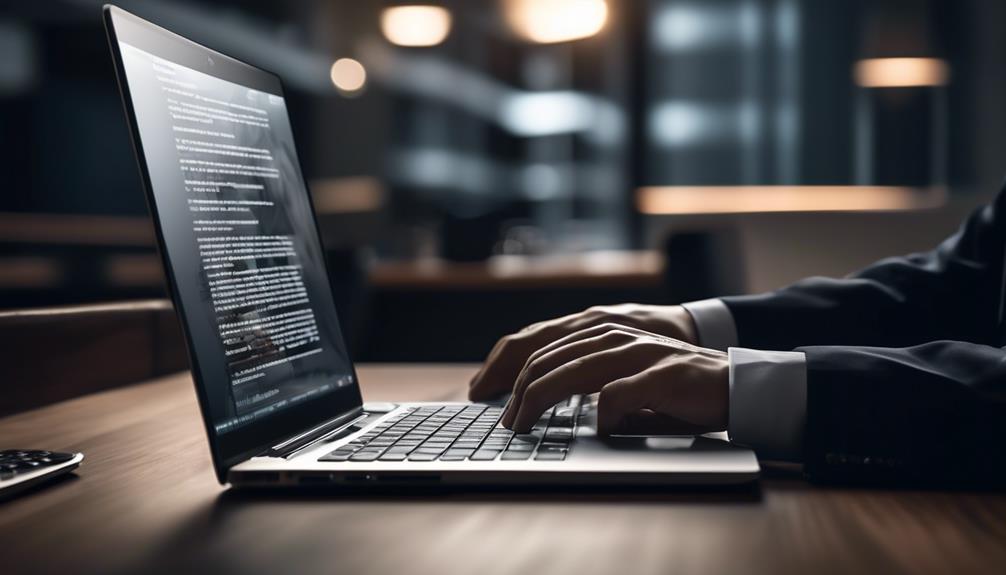
To engage our existing client effectively, our proposal email must clearly articulate the unique value our solution brings to their business. When writing a proposal email to an existing client, it's important to focus on the established relationship and the client's specific needs.
Here are three key points to consider:
- Tailor the proposal to the client's business: Mention previous successful collaborations and how the proposed solution aligns with their current business goals.
- Highlight added value: Emphasize how the proposed solution addresses specific pain points or offers improvements based on the client's feedback and past experiences.
- Offer exclusive benefits: Show appreciation for their continued partnership by including special discounts, extended support, or additional services as a token of gratitude for their loyalty.
Sales Partnership Proposal Email
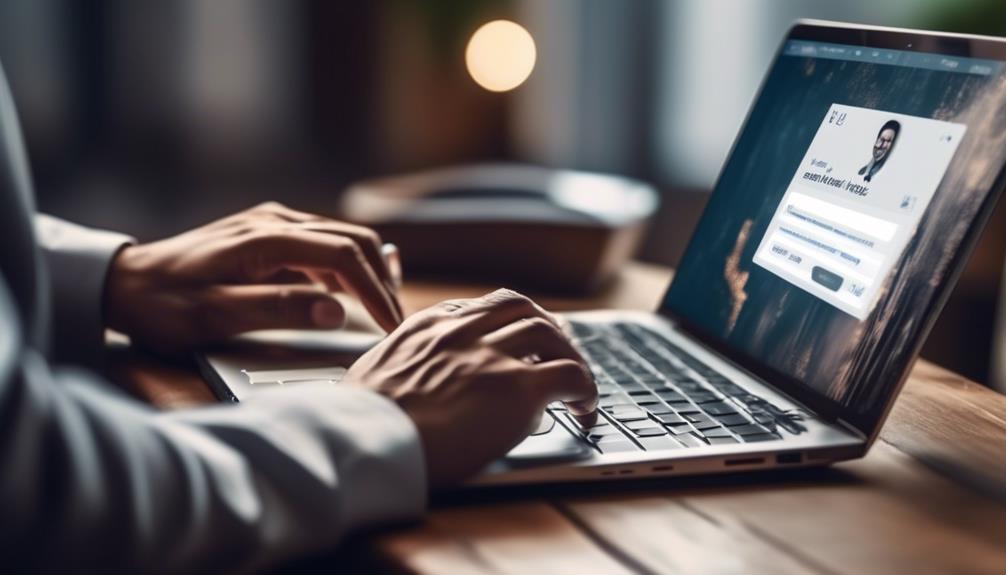
We know the benefits of a strong sales partnership can be immense. Our proposal email will outline the collaborative opportunities and mutual growth potential that a partnership with us can offer.
Let's discuss how we can work together to achieve our shared goals.
Benefits of Partnership
Collaborating with a sales partner can open doors to new customer segments and increase sales opportunities, expanding our reach and market presence. The benefits of partnership in a sales proposal email to a potential client include:
- Access to new customer segments: A sales partnership provides an opportunity to tap into untapped markets and expand the customer base.
- Increased sales opportunities: By leveraging the expertise and resources of a sales partner, we can capitalize on more sales leads and potential customers.
- Enhanced innovation and customer experiences: Sharing resources and expertise with a sales partner can lead to more innovative solutions and improved customer experiences, ultimately driving mutual business growth.
These benefits are crucial when reaching out to potential clients for a new project and can be further discussed in detail to demonstrate the value of the proposed partnership.
Collaborative Opportunities
Considering the potential for synergistic growth, our proposal seeks to establish a collaborative business relationship with a focus on expanding market reach and increasing sales opportunities. By leveraging collaborative opportunities, we aim to tap into new markets, enhance brand visibility, and generate increased sales through a strategic partnership.
Our proposal email outlines a comprehensive plan for utilizing shared resources, complementary expertise, and mutual support to drive sales growth. We'll also detail specific strategies for leveraging social media, demographic information, and networking to maximize our collective reach and impact.
This partnership offers a unique opportunity to combine our strengths and create a mutually beneficial relationship that aligns with our respective business objectives. We look forward to discussing how we can best collaborate to achieve our shared goals.
Mutual Growth Potential
In exploring the potential for mutual growth in our proposed sales partnership, it's crucial to emphasize the value proposition and how it aligns with our shared goals and objectives.
When writing a business proposal email, we must highlight specific demographic information that tells of our potential client's agreed need to include introduction with a clear, unique process. This should be supported by evidence of successful partnerships or synergies to demonstrate the long-term outcomes you plan.
We believe that presenting a clear and compelling case for the mutual growth potential will resonate with the recipient, showcasing the benefits of collaboration and the opportunities for shared success and expansion.
Business Partnership Proposal Email

We believe that a strategic business partnership can significantly enhance our mutual growth and success.
When crafting a business partnership proposal email, it's essential to convey our company details, the proposal to redesign our existing clients, and how this proposal is the answer to achieving mutual success.
To ensure the effectiveness of the proposal email, it's crucial to learn how to write a compelling and persuasive email that clearly outlines the benefits of the partnership for both parties.
Our proposal email should articulate how our collaboration can lead to increased revenue, expanded market reach, and improved customer satisfaction.
By presenting a well-structured and persuasive proposal email, we can demonstrate our commitment to the partnership and highlight the value we bring to the table.
This approach will resonate with potential partners who desire mastery and professionalism in business relationships.
Therefore, the business partnership proposal email should emphasize the potential for growth and success that can be achieved through a collaborative effort.
Service Proposal Email
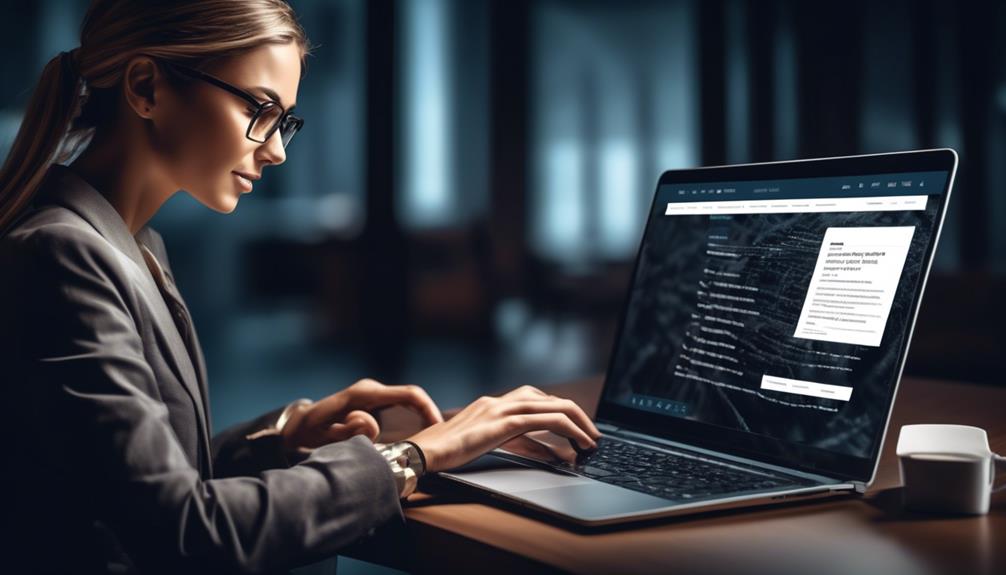
As we seek to introduce our services to potential clients, a well-crafted service proposal email becomes pivotal in showcasing the value we can provide to meet their needs and objectives.
When crafting a service proposal email, it's essential to include the following key elements:
- Company Details: Clearly outline our company's background, expertise, and experience to establish credibility and trust with the potential client.
- Problem-Solving Approach: Identify and articulate one specific problem the potential client is facing, and propose a tailored solution that demonstrates our understanding of their unique challenges.
- Special Skills Related to the Service: Highlight our specialized skills, unique selling points, or any relevant achievements that set us apart from competitors and position us as the best fit for the client's needs.
Are there specific guidelines for writing a proposal email or can it be written in a more general format?
When it comes to writing effective proposal emails, it’s important to follow specific guidelines to increase your chances of success. While there is some flexibility in the format, focusing on concise and persuasive language, clear structure, and a professional tone will help you craft a compelling proposal email.
Frequently Asked Questions
How Do You Write a Proposal Email Sample?
We write a proposal email sample by crafting a compelling subject line.
Expressing gratitude is an important part of the email.
Next, we clearly define the problem that needs to be addressed.
We then outline our proposed solution to the problem.
Specifying the price is another key aspect of the proposal email.
Reducing risk is something that we highlight in the email.
Providing clear next steps is crucial for the recipient to understand what to do next.
Personalization, conciseness, and relevance are key to standing out.
To ensure a professional and clear format, we include a subject line, greeting, opening line and body, ending, and signature.
This approach engages recipients and maximizes the impact of our proposal email.
How Do You Write a Simple Proposal?
We write a simple proposal by breaking down our ideas into clear, actionable steps.
It's like building a sturdy bridge – each component must be solid and connected for the whole structure to stand.
We outline the problem, propose a solution, and detail the benefits.
How Do You Pitch a Proposal via Email?
We pitch a proposal via email by:
- Crafting a compelling subject line to grab attention
- Addressing the recipient personally
- Succinctly outlining the problem and proposed solution
We also:
- Emphasize the value proposition
- Include clear pricing and risk reduction strategies
- Provide a clear call to action for next steps
Our goal is to create a professional, persuasive email that motivates the recipient to engage with our proposal.
How Do You Write a Proposal Message?
We write a proposal message by clearly stating gratitude.
Defining the problem.
Outlining the desired outcome.
Proposing a solution and price.
Reducing risk.
Detailing next steps.
We ensure personalization, a clear structure, and an attention-grabbing subject line.
This approach persuasively conveys our proposal's value and sets the stage for a successful business interaction.
Conclusion
In crafting a proposal email, it's crucial to strike a balance between professionalism and personalization.
By clearly outlining the problem, offering a solution, and presenting a competitive price, we can capture the recipient's attention and drive them to take action.
The art of proposal writing lies in the ability to communicate complex ideas simply and effectively, leaving a lasting impression that motivates the recipient to move forward.
Natali – Editor in Chief (Strategy and Mastery, AI Expert) Natali, our Editor in Chief, is the driving force behind our content’s strategic direction. With a keen eye for detail and a deep understanding of market trends, Natali ensures that our content is top-notch and strategically aligned with our client’s goals. Her expertise in AI helps to seamlessly integrate advanced technology into our marketing strategies, pushing the boundaries of conventional marketing.
How to Write Email
Vacation Email Etiquette: How to Write with Politeness
Struggling to craft the perfect vacation email? You'll want to keep reading for essential tips and strategies to nail it.

So, we’re all familiar with the routine of composing a professional out-of-office email, correct? Actually, perhaps not.
While the idea of taking time off sounds like a breeze, the art of communicating that to your colleagues can be a bit more complex.
But fear not, because we've got some key tips and strategies to help you navigate the ins and outs of drafting the perfect out-of-office message.
Whether it's setting clear expectations or ensuring your absence won't disrupt the team's workflow, there's a lot to consider when it comes to mastering the art of the vacation email.
Key Takeaways
- Include specific details such as dates of absence, expected return date, and urgent instructions in the vacation email.
- Clearly communicate dates of absence in the out-of-office message and provide alternative contacts for urgent matters.
- Maintain a professional tone in all communication and convey professionalism and reliability in the out-of-office message.
- Understand company vacation policy and use appropriate request email templates, while also considering the impact on workload and showing consideration for the team when requesting time off.
Essential Components of a Vacation Email
When crafting a vacation email, it's essential to include specific details such as the dates of your absence, your expected return date, and any necessary instructions for urgent matters. A concise subject line should indicate that it's an informal vacation request. In the body of the email, maintain a professional tone to ensure a smooth and clear communication process.
In the first paragraph, clearly state the purpose of the email – to request vacation time. Provide the dates of your absence, including the start and end dates, and your expected return date. This information helps the recipient understand the duration of your absence and plan accordingly.
Additionally, if there are any specific instructions for urgent matters during your absence, make sure to include them in the email to ensure that any critical issues can be addressed in your absence.
Crafting a Professional Out-of-Office Message
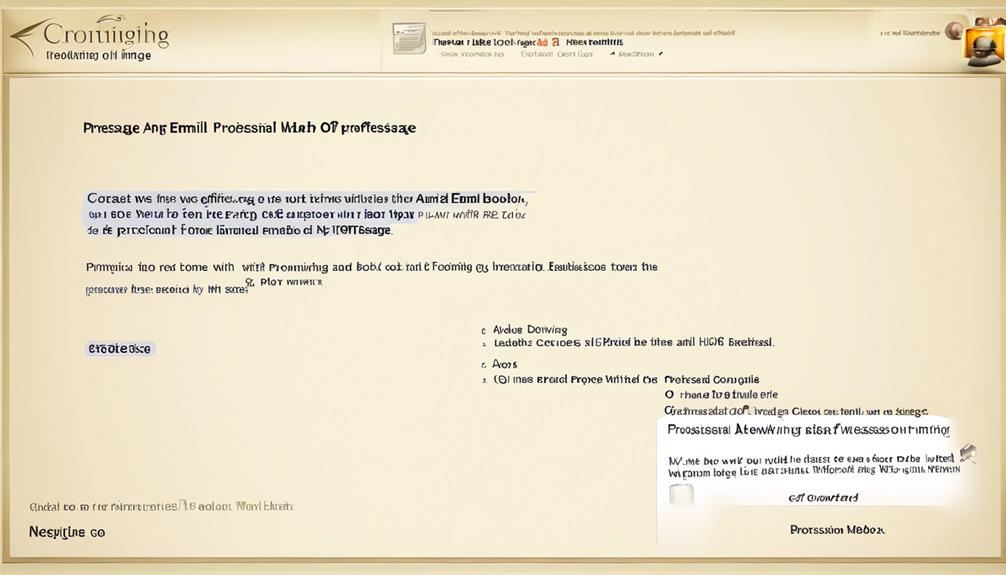
After requesting vacation time, it's important to also craft a professional out-of-office message that clearly communicates the dates of absence and provides alternative contacts for urgent matters.
When writing the out-of-office message, it's essential to ensure that it conveys a sense of professionalism and reliability. Clearly state the dates of your absence and provide an alternative contact in case of urgent matters.
It's good practice to express gratitude for understanding and cooperation during your leave. Additionally, offer to follow up on any pending matters upon your return to reassure colleagues and clients that their issues will be addressed promptly.
While crafting the message, it's important to adhere to company communication standards and policies to maintain consistency in tone and content. Avoid sharing unnecessary personal details in the out-of-office message to maintain a professional tone.
Writing a good out-of-office message is crucial as it reflects your commitment to professionalism and ensures that important matters are attended to in your absence.
Setting Expectations With Colleagues and Clients
To ensure smooth communication during my absence, we will clearly communicate our availability and response times for emails and calls to colleagues and clients. It's crucial to set realistic expectations and maintain a professional tone in all communication. Here is a simple table to help you craft a professional email and set expectations with your colleagues and clients:
| Information to Include | Example |
|---|---|
| Availability during vacation | I will be out of the office from [start date] to [end date]. |
| Response times for emails and calls | I will have limited access to emails and will respond within 24-48 hours. |
| Delegated responsibilities | Please contact [colleague's name] for any urgent matters. |
| Contact information | For immediate assistance, please reach out to [colleague's name] at [contact information]. |
Effective Examples of Out-of-Office Messages

Crafting effective out-of-office messages is an essential aspect of maintaining clear communication while on vacation. When writing these messages, it's important to be polite and professional while providing the necessary information. Here are three effective examples of out-of-office messages that you can use as a template for your own:
- 'I am currently out of the office and will return on [date]. For urgent matters, please contact [colleague's name] at [colleague's email].'
- 'Thank you for your email. I'm out of the office until [date] and will have limited access to email. For immediate assistance, please contact [alternative contact].'
- 'I am on vacation until [date] and won't be checking emails. For urgent matters, please reach out to [colleague's name] at [colleague's email].'
These examples demonstrate a good rule of thumb for crafting effective out-of-office messages. They provide clear information about the duration of the absence, alternative contacts for urgent matters, and set professional expectations for communication while away.
When using these examples, be sure to customize them to fit your specific situation and maintain a polite and professional tone.
Mastering the Art of the Vacation Email
As we focus on mastering the art of the vacation email, it's essential to seamlessly shift from crafting effective out-of-office messages to the nuances of requesting and composing a professional vacation email.
When it comes to requesting time off, knowing how to write a Vacation Leave Request or Time Off Email is crucial. We need to make sure we understand the company vacation policy and use the appropriate request email template. It's important to know the steps for writing a vacation request email, including a concise subject line, specifying the reason for the request, exact dates, preparation steps, and a thank-you note. Additionally, we should ask ourselves if we really need to take those days off, consider the impact on our workload, and reflect consideration for our team.
Understanding different types of vacation request emails, such as reminders, emergency time off, annual vacations, one day off, or canceling a vacation request, is also essential. Before sending a vacation request email, we need to ensure we include emergency contact information if necessary and assure coverage during our absence.
Mastering the art of the vacation email requires attention to detail and adherence to professional etiquette.
Frequently Asked Questions
What Should I Write in a Vacation Email?
We should include the dates of our absence, the reason for our vacation, and who to contact in our absence.
It's important to keep the email brief and to the point, while also expressing gratitude for understanding.
We can reassure the recipient that we'll respond to any urgent matters upon our return.
It's also good to set up an out-of-office auto-reply with the same information.
How Do You Write an Email for Time Off?
We write an email for time off by crafting a clear subject line, stating the purpose, providing specific dates, and outlining a plan for managing responsibilities during absence.
We ensure to include emergency contact information and express willingness to address any concerns. Politeness, professionalism, and appreciation are crucial throughout.
Understanding company policies and considering workload impact on colleagues help in crafting a thoughtful request reflecting consideration for the team.
How Do You Email a Planned Vacation Leave?
When we email a planned vacation leave, it's important to be clear and concise about the dates and reason for our absence. We should also mention who'll be covering for us in our absence and provide any necessary contact information.
It's crucial to ensure that our email is professional and respectful of our colleagues' time and responsibilities. Lastly, we should make sure to set up an out-of-office auto-reply for any incoming emails during our vacation.
How Do I Professionally Say I Am on Vacation?
We inform our colleagues of our vacation by clearly stating the purpose and dates.
We assure them that work will be handled and maintain a polite and professional tone.
We offer to address any concerns and end with a thank you note and openness to discussions.
This approach ensures a professional and considerate communication of our absence.
Conclusion
We understand that taking vacation time can sometimes feel like a burden on our colleagues. However, by following the proper procedures and communicating effectively, we can ensure a smooth transition and minimal disruption.
Our team's support for each other's well-deserved time off strengthens our bond and ultimately leads to a more productive and positive work environment.
Erik – Email, SEO, AI Expert Writer Erik is the strategist, the thinker, and the visionary. His role at Influenctor is pivotal in integrating SEO with AI-driven content strategies. With an extensive background in email marketing and a profound understanding of search engine algorithms, Erik develops innovative strategies that elevate our client’s online presence. His work ensures that our content is seen, felt, and remembered.
How to Write Email
How to Write a Polite RSVP Email
Discover the essential elements for crafting a compelling RSVP email that guarantees a timely and clear response.
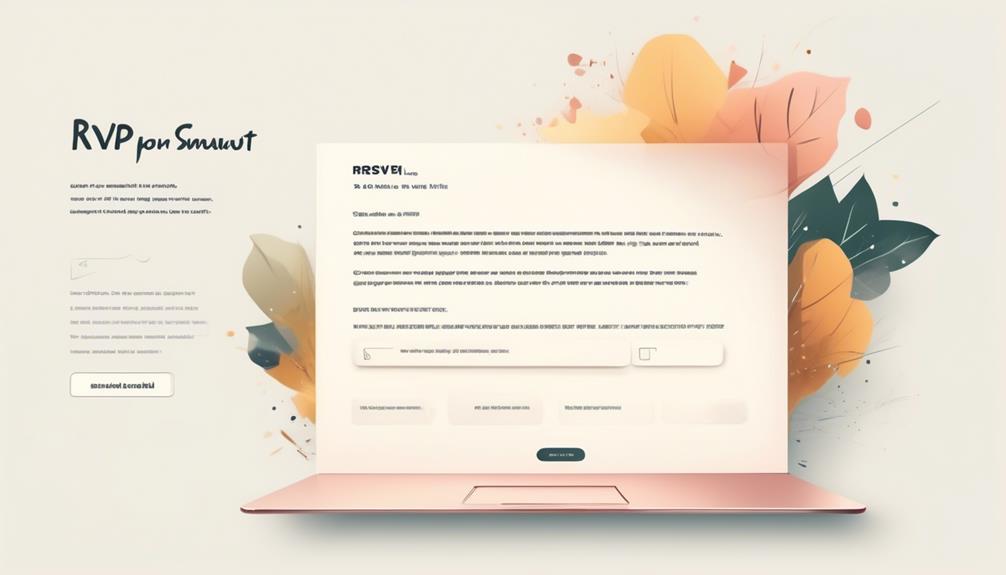
Crafting an RSVP email is akin to creating the ideal invite – each phrase and element reflects the event’s tone and professionalism. We’ve all gotten RSVP emails that puzzle us, leaving us unsure of how to reply or even what we’re replying to.
But fear not, because we've got the key to crafting an RSVP email that will guarantee a timely and clear response. So, whether you're planning a corporate event or a casual gathering, mastering the art of crafting a compelling RSVP email is crucial for ensuring a successful and organized event.
Key Takeaways
- The subject line of an RSVP email should be concise and informative.
- Respond promptly to RSVP emails and acknowledge the invitation with gratitude.
- Craft a professional RSVP email using polite language, proper grammar, and a respectful tone.
- Clearly explain the importance of RSVP, encourage confirmation and provide necessary details in the email.
Understanding the RSVP Email
Understanding the RSVP email is crucial for properly responding to event invitations and ensuring clear communication with the host. When crafting an RSVP email, it's essential to pay attention to the RSVP email subject to convey your response clearly. The subject line should be concise and informative, such as 'RSVP Confirmation for [Event Name]' or 'Reply to RSVP for [Event Date].' This helps the host easily identify and categorize responses.
In addition, it's important to respond to RSVP emails promptly. This not only shows respect for the host's invitation but also helps with event planning. When sending an RSVP via email, make sure to acknowledge the invitation, express gratitude, and provide a clear RSVP confirmation. Clearly state whether you'll attend or not, as well as any additional information requested, such as dietary preferences or the number of guests attending.
Crafting a professional RSVP email involves using polite language, proper grammar, and a respectful tone. The email should be concise, yet thorough, ensuring that all necessary details are included. Moreover, be mindful of any specific instructions provided in the invitation and address them in your response.
Crafting a Clear RSVP Request
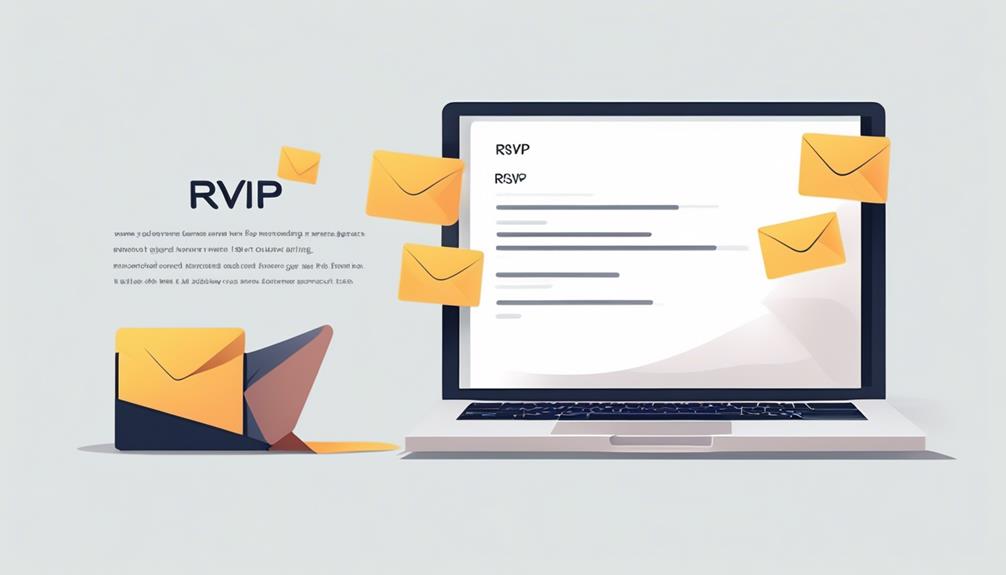
Upon receiving an event invitation, it's essential to clearly articulate the RSVP request, emphasizing the significance of timely responses and providing guidance on crafting a professional and courteous RSVP email.
When crafting a clear RSVP request, it's crucial to clearly explain what RSVP means and why it's important. Encourage recipients to let you know if they can attend and to confirm the exact number of attendees. Provide a standard RSVP format or template to make it easier for invitees to respond.
It's also important to offer RSVP samples or examples to guide recipients on how to write an RSVP email professionally. Emphasize the importance of prompt responses and encourage honesty and openness in their replies.
When making the RSVP request, be clear and direct in asking recipients to confirm their attendance. Use language that's polite and courteous, but also conveys the importance of their response.
Polite RSVP Email Closure
We appreciate the invitation and look forward to the event. It's important to conclude your RSVP email with a polite and friendly closure to leave a positive impression. Expressing gratitude for the invitation and conveying anticipation for the event is essential. Use phrases like 'Looking forward to the event,' 'Thank you for the invitation,' or 'Warm regards' to conclude your email respectfully. It's crucial to ensure that your closing aligns with the tone and formality of the event or the relationship with the host. Signing off with your name or a personalized closing, such as 'Best wishes' or 'Sincerely,' maintains professionalism. When replying, if you cannot attend, please let the host know. Here is an example of a polite RSVP email closure:
| Looking forward to the event | Thank you for the invitation | Warm regards |
|---|---|---|
| Excitement and anticipation | Gratitude | Friendliness |
Closing your RSVP email with warmth and appreciation leaves a lasting positive impression.
Utilizing RSVP Email Templates
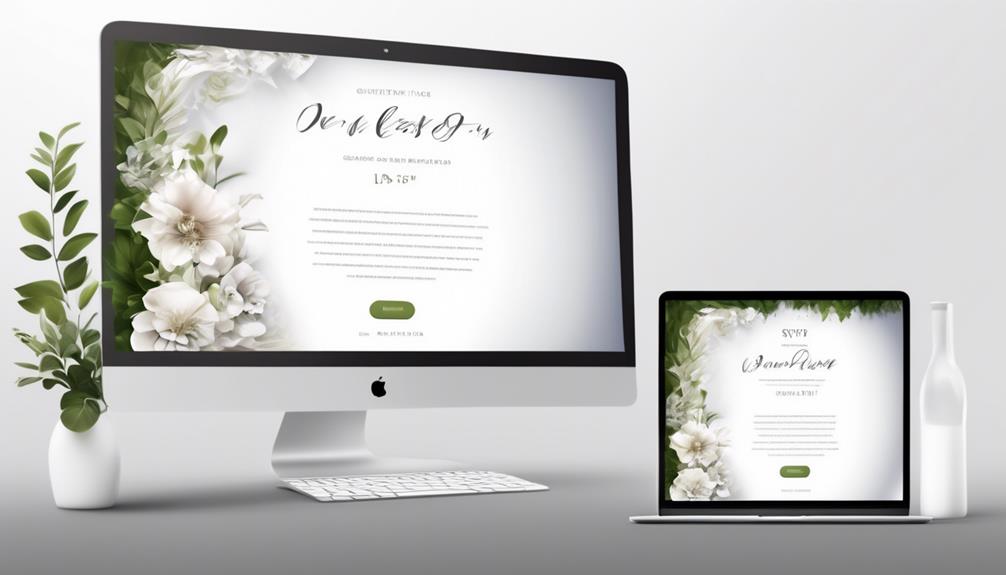
Utilizing email templates can greatly streamline the process of drafting RSVP responses, making the task more efficient and ensuring a consistent and professional tone. When writing invitation emails, using RSVP email templates can save time and effort, especially when responding to multiple invitations. These templates often include standard phrases such as 'Répondez s'il vous plaît,' 'We look forward to seeing you,' and 'Please kindly respond by [event date].' They can also provide guidance on how to address various RSVP responses, such as accepting, declining, or expressing gratitude for the invitation.
In addition to social events, RSVP emails are also crucial in professional settings, such as job applications, where prompt and well-crafted responses are essential. Utilizing templates can help maintain a polished and organized approach, which is particularly important for seating arrangements, dietary requirements, and other logistical considerations.
Mastering RSVP Response Etiquette
Mastering RSVP response etiquette involves understanding the significance of timely and respectful RSVP responses and adhering to established social and professional norms. When crafting an RSVP reply, it's crucial to strike the right tone, conveying your response clearly and professionally.
Whether you're unable to attend or excited to say yes, it's essential to communicate your decision promptly, allowing the host to make necessary arrangements. Politely declining an invitation requires tact and consideration, ensuring that the host understands your decision while expressing gratitude for the invitation.
In professional settings, such as event planning, mastering RSVP response etiquette is paramount for maintaining professional relationships and ensuring smooth coordination. Clear and concise language in RSVP messages is key, as it demonstrates respect for the host's time and effort in organizing the event.
Frequently Asked Questions
How Do You RSVP in an Email Example?
Sure, we can definitely help with that.
When responding to an email invitation, it's important to be polite and timely.
A simple 'Thank you for the invitation. We'll be attending the event' is a good example of how to RSVP in an email. It's concise and clearly conveys your response.
Remember to include all relevant details, such as the date and time of the event, and any plus-ones if applicable.
What Do You Write in a RSVP Response?
We always strive to provide a prompt and detailed response when sending an RSVP.
It's essential to express our gratitude for the invitation, state our intention to attend or regretfully decline, and include any necessary details requested.
Clear communication and a respectful tone are key in ensuring the event planner has the information needed for a successful gathering.
How Do You Confirm Rsvp?
We confirm RSVPs by sending a polite and prompt response to the invitation. It's important to acknowledge the invitation and clearly state our intention to attend or not.
A well-crafted email with a clear subject line and respectful tone can effectively confirm our RSVP. It's also essential to provide the requested response option, whether it's a 'Yes,' 'No,' or 'Maybe,' to ensure proper event planning and organization.
How Do You Politely Ask for Rsvp?
We kindly ask for your RSVP by the indicated date, as it will help us finalize the arrangements.
Your timely response is greatly appreciated.
Thank you for considering our invitation.
Conclusion
We've learned the importance of crafting a clear and engaging RSVP email.
Did you know that 80% of event planners say that receiving timely RSVPs is one of their biggest challenges?
By following the tips outlined and using a well-designed template, we can make the RSVP process smoother for both the host and the guests.
Happy RSVPing!
Erik – Email, SEO, AI Expert Writer Erik is the strategist, the thinker, and the visionary. His role at Influenctor is pivotal in integrating SEO with AI-driven content strategies. With an extensive background in email marketing and a profound understanding of search engine algorithms, Erik develops innovative strategies that elevate our client’s online presence. His work ensures that our content is seen, felt, and remembered.
How to Write Email
How to Write a Professional Email Reminder to Your Professor
Frustrated with unanswered emails? Learn how to craft a compelling reminder email to your professor for a prompt response.

We’ve all experienced it – a hectic week filled with numerous tasks, and then suddenly, the project deadline is just around the corner. You find yourself in need of some essential details from your professor, yet there’s been no reply to your first email.
Crafting a reminder email to your professor can be a delicate task, requiring a balance of assertiveness and respect. It's essential to consider the best approach to ensure your message stands out without coming across as pushy or demanding.
So, how do you strike that balance and ensure your reminder email gets the attention it deserves? Well, let's explore some effective strategies to master the art of writing a reminder email to your professor.
Key Takeaways
- Clearly explain the reason for the follow-up
- Reiterate the importance of the matter
- Express gratitude for the professor's time and attention
- Reflect positively on the sender
Understanding the Purpose
Understanding the purpose of writing a reminder email to a professor is essential for effectively communicating your needs and showing respect for their time. When crafting a polite follow-up email to a professor, it's important to ensure that the email serves as a gentle reminder rather than an imposition.
The original email likely mentioned getting in touch for a specific reason, and a polite follow-up can help speed the process along. It's important to clearly explain the reason for the follow-up, reiterating the importance of the matter and expressing gratitude for the professor's time and attention.
In writing a reminder email to a professor, the key is to be respectful and considerate. It's crucial to avoid sounding demanding or entitled and instead, convey a tone of appreciation and understanding. By doing so, the email not only serves its purpose of gently reminding the professor but also reflects positively on the sender.
Understanding the purpose of the email and approaching it with a polite and respectful tone is fundamental in effectively communicating with professors.
Setting the Right Tone

When composing a reminder email to a professor, it's crucial to set a respectful and professional tone that aligns with the formality of the professor's communication style. This ensures that the email conveys courtesy and appreciation for the professor's time and expertise.
To achieve this, consider the following:
- Be courteous and polite: Express gratitude for the professor's guidance or feedback in your email.
- Use respectful language: Address the professor using their appropriate title and maintain a formal tone throughout the email.
- Show consideration for the professor's time: Keep the email concise and to the point, demonstrating that you value their time.
- Convey enthusiasm and eagerness: Express your genuine interest in receiving feedback or a reminder of your request, showcasing your dedication to the subject matter.
Structuring Your Email
Regarding the structuring of your email, emphasizing clarity and directness in your communication will ensure your message is effectively conveyed to the professor.
When composing a reminder email to your professor, it's crucial to structure it in a clear and organized manner.
Begin with a concise and specific subject line that reflects the purpose of your email, such as 'Follow-Up on Meeting Request.'
In the greeting, address the professor using their formal title and last name, for example, 'Dear Professor Smith.'
Clearly state the context of your email and reference any previous communication to provide a reminder of the original discussion or request.
Be explicit about what you're asking the professor to do, whether it's scheduling a meeting, providing feedback, or submitting an assignment.
End the email with a polite closing, such as 'Thank you for your time and attention' or 'Best regards,' followed by your name.
Structuring your email in this manner will ensure that your message is respectful, clear, and easily understandable to the professor.
Polishing Your Email

In crafting a polite follow-up email to your professor, it's essential to pay attention to the finer details of your message, ensuring that it reflects professionalism and respect while effectively conveying your purpose. Polishing your email involves refining the language and structure to create a compelling and respectful message.
Here are some key aspects to consider:
- Tone: Ensure the tone of your email is respectful and courteous, maintaining a professional demeanor throughout the message.
- Clarity: Double-check for any grammatical errors, typos, or confusing language that may detract from the clarity of your email.
- Conciseness: Keep your email brief and to the point, respecting the professor's time while still conveying your request effectively.
- Gratitude: Express your gratitude for the professor's time and consideration, reinforcing a positive and respectful tone in the email.
Ensuring Professionalism
We maintain a formal and respectful tone in our email communications with professors to ensure professionalism and convey our message effectively. When writing a reminder email to a professor, it's crucial to uphold a high level of professionalism. This includes using a clear and concise subject line that accurately reflects the purpose of your email.
Proofreading for spelling and grammatical errors is essential, as these can detract from the professional image you want to project. It's important to avoid using casual language, slang, or emoticons in your communication, as these can be seen as unprofessional.
Expressing gratitude and appreciation for the professor's time and consideration is also key to maintaining a professional tone. Furthermore, it's a good practice to reiterate any important points in your email to ensure that your request is received and addressed.
Frequently Asked Questions
How Do You Politely Send a Reminder Email?
We politely send a reminder email by acknowledging the recipient's busy schedule.
We express our understanding of their workload and reiterating the importance of the matter at hand.
It's crucial to maintain a respectful tone and avoid sounding demanding.
We can also offer additional assistance or information if needed, showing our willingness to collaborate.
Ultimately, a polite reminder email conveys our professionalism and consideration for the recipient's time.
How Do You Politely Resend an Email to a Professor?
We politely resend an email to a professor by first reviewing the original message for clarity and conciseness.
Then, we craft a polite follow-up email, acknowledging the previous correspondence and restating the request or question.
It's important to express understanding of their busy schedule and to offer flexibility for a response.
This demonstrates professionalism and respect for the professor's time while ensuring the message is received.
How Do I Write an Email With a Reminder?
We write reminder emails to professors to prompt a response or follow-up on a previous email. It's important to be polite and professional in our approach, considering the professor's busy schedule. We can mention the original email, express gratitude, and restate our request clearly.
Avoid being pushy or demanding. A well-crafted reminder email can help us maintain a good rapport with our professors and ensure our needs are addressed.
How Do You Say Reminder in a Formal Email?
In a formal email, a polite way to say 'reminder' is by using phrases like 'just a gentle nudge' or 'a quick follow-up.' These expressions convey the message respectfully without coming across as pushy or demanding.
It's important to maintain professionalism and courtesy when sending reminders to professors. By using considerate language, we can effectively communicate our need for a response while showing respect for the recipient's time and priorities.
Conclusion
As we craft our reminder email to our professor, let's remember to approach it with the gentle touch of a painter, delicately adding the final strokes to create a masterpiece.
Our words should be like a soothing melody, resonating with gratitude and respect.
With each carefully chosen phrase, we paint a picture of professionalism and consideration, ensuring our message is received with warmth and understanding.
Erik – Email, SEO, AI Expert Writer Erik is the strategist, the thinker, and the visionary. His role at Influenctor is pivotal in integrating SEO with AI-driven content strategies. With an extensive background in email marketing and a profound understanding of search engine algorithms, Erik develops innovative strategies that elevate our client’s online presence. His work ensures that our content is seen, felt, and remembered.
-

 Email Automation4 weeks ago
Email Automation4 weeks agoAutomated Email Marketing 101: A Beginner's Tutorial
-

 Email Warmup1 month ago
Email Warmup1 month agoWarm Follow-Up Email
-

 Email Design Hub2 months ago
Email Design Hub2 months ago3 Essential Tools for Email Marketing Design Success
-

 Email Marketing1 month ago
Email Marketing1 month agoWhat Is Email Marketing Advantages and Disadvantages
-

 Email Marketing1 month ago
Email Marketing1 month agoWhy Email Marketing Is Effective
-

 Email Template1 month ago
Email Template1 month agoCrafting the Perfect Book Club Invitation Email Template
-

 Search Engine Optimization4 weeks ago
Search Engine Optimization4 weeks agoSEO Checklist: Enhance Your Site’s Performance
-

 Email Marketing1 month ago
Email Marketing1 month agoDoes Email Marketing Work in 2024



















